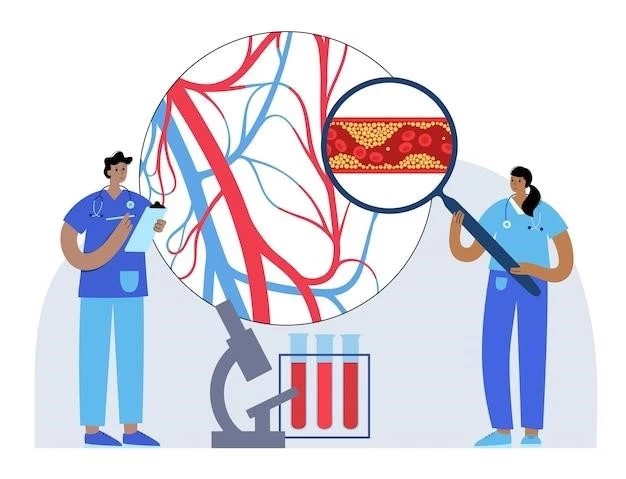Disease ⸺ Dysosteosclerosis
Introduction
Dysosteosclerosis is a rare genetic disorder characterized by abnormal bone growth‚ leading to skeletal abnormalities such as thickened bones and bone deformities. This condition can result in bone fragility‚ osteosclerosis‚ calcium deposits‚ and skeletal dysplasia.
Individuals with dysosteosclerosis often experience a range of symptoms due to the altered bone density and structure. Understanding the causes‚ symptoms‚ diagnosis‚ and treatment options for dysosteosclerosis is crucial in managing this inherited condition effectively.
This article aims to provide an in-depth exploration of dysosteosclerosis‚ comparing it to osteoporosis‚ discussing the symptoms‚ diagnosis methods‚ available treatment options‚ and the latest research advancements in the field. By shedding light on living with dysosteosclerosis and future directions‚ the impact of this condition on individuals and their quality of life can be better understood.
Understanding Dysosteosclerosis
Dysosteosclerosis is a rare inherited condition characterized by abnormal bone growth‚ resulting in thickened bones‚ skeletal abnormalities‚ and bone fragility. This disorder affects the bone density and structure‚ leading to difficulties in bone metabolism and proper bone development.
Individuals with dysosteosclerosis may present with various skeletal manifestations‚ such as osteosclerosis‚ where bones become denser than normal due to increased calcium deposits. This condition can also cause skeletal dysplasia‚ which refers to abnormal bone formation and growth patterns.
The abnormal bone growth seen in dysosteosclerosis can lead to a range of physical symptoms‚ including bone deformities and increased susceptibility to fractures. Understanding the underlying mechanisms of dysosteosclerosis on a cellular and molecular level is crucial in guiding effective treatment strategies and improving outcomes for affected individuals.
Researchers continue to investigate the genetic basis of dysosteosclerosis to uncover the specific gene mutations responsible for the disorder. By gaining a deeper understanding of the molecular pathways involved in dysosteosclerosis‚ scientists aim to develop targeted therapies that can address the underlying causes of abnormal bone growth and improve the quality of life for individuals living with this condition.

Symptoms of Dysosteosclerosis
Individuals with dysosteosclerosis may experience a variety of symptoms related to the abnormal bone growth and skeletal abnormalities associated with the condition. Common clinical manifestations of dysosteosclerosis include⁚
- Thickened bones⁚ Patients with dysosteosclerosis often exhibit bones that are thicker than normal due to increased bone density.
- Bone deformities⁚ The abnormal bone growth in dysosteosclerosis can lead to skeletal deformities‚ affecting the shape and structure of the bones.
- Bone fragility⁚ Despite the thickened appearance‚ bones in dysosteosclerosis may be fragile and prone to fractures due to altered bone composition.
- Osteosclerosis⁚ The excessive accumulation of calcium deposits can cause osteosclerosis‚ where bones become overly dense.
- Calcium deposits⁚ Dysosteosclerosis can result in the abnormal deposition of calcium‚ affecting bone mineralization and integrity.
- Skeletal dysplasia⁚ The disordered bone growth observed in dysosteosclerosis can lead to skeletal dysplasia‚ impacting skeletal development and function.
Recognizing these symptoms is essential for the timely diagnosis and management of dysosteosclerosis. Individuals presenting with signs of abnormal bone density‚ skeletal deformities‚ or increased bone fragility should seek medical evaluation to determine appropriate treatment and support for this rare genetic disorder.
Diagnosis of Dysosteosclerosis
Diagnosing dysosteosclerosis typically involves a comprehensive evaluation combining clinical assessments‚ imaging studies‚ and genetic testing to confirm the presence of this rare genetic disorder. Healthcare providers use a multidisciplinary approach to diagnose and differentiate dysosteosclerosis from other conditions with similar skeletal manifestations.
Key diagnostic steps for dysosteosclerosis may include⁚
- Clinical evaluation⁚ Physicians assess the patient’s medical history‚ familial patterns‚ and physical symptoms indicative of abnormal bone growth and skeletal abnormalities.
- Imaging studies⁚ X-rays‚ CT scans‚ or MRI scans can reveal the characteristic thickened bones‚ bone deformities‚ and calcium deposits associated with dysosteosclerosis.
- Genetic testing⁚ Molecular genetic testing can identify specific gene mutations responsible for dysosteosclerosis‚ helping to confirm the diagnosis and guide appropriate management strategies.
- Bone biopsy⁚ In some cases‚ a bone biopsy may be performed to analyze the bone tissue microscopically‚ providing insights into the structural changes present in dysosteosclerosis.
By combining these diagnostic methods‚ healthcare professionals can establish a precise diagnosis of dysosteosclerosis and tailor treatment plans to address the individual needs of patients affected by this inherited condition. Early and accurate diagnosis is essential in managing dysosteosclerosis effectively and improving the overall prognosis for individuals living with this rare skeletal disorder.
Treatment Options for Dysosteosclerosis
Managing dysosteosclerosis often requires a multidisciplinary approach involving various therapeutic interventions aimed at addressing the symptoms and complications associated with this rare genetic disorder. While there is no cure for dysosteosclerosis‚ treatment strategies focus on alleviating symptoms‚ improving bone health‚ and enhancing patients’ quality of life.
Common treatment options for dysosteosclerosis may include⁚
- Physical therapy⁚ Physical therapy programs can help individuals with dysosteosclerosis maintain mobility‚ improve muscle strength‚ and reduce the risk of falls and fractures.
- Medication⁚ Pharmacological interventions may be prescribed to manage pain‚ promote bone health‚ and prevent fractures in individuals with dysosteosclerosis.
- Surgical interventions⁚ In cases of severe skeletal deformities or fractures‚ surgical procedures may be necessary to correct bone abnormalities‚ stabilize fractures‚ or improve joint function.
- Genetic counseling⁚ Genetic counseling services can provide valuable information to individuals and families affected by dysosteosclerosis‚ offering guidance on the inheritance pattern‚ genetic risks‚ and family planning options.
- Supportive care⁚ Psychological support‚ social services‚ and adaptive aids may be beneficial for individuals with dysosteosclerosis to cope with the challenges of living with a chronic skeletal disorder.
Collaboration between healthcare providers‚ including orthopedic specialists‚ geneticists‚ physical therapists‚ and mental health professionals‚ is essential in developing a comprehensive treatment plan tailored to the unique needs of each individual with dysosteosclerosis. By addressing the physical‚ emotional‚ and social aspects of this condition‚ patients can optimize their well-being and maintain functional independence to the best extent possible.
Dysosteosclerosis vs. Osteoporosis
While dysosteosclerosis and osteoporosis both affect bone health‚ they are distinct conditions with differing characteristics and underlying mechanisms. Dysosteosclerosis is a rare genetic disorder marked by abnormal bone growth‚ thickened bones‚ and skeletal deformities‚ whereas osteoporosis is a common bone disease characterized by decreased bone density and increased risk of fractures.
Key differences between dysosteosclerosis and osteoporosis include⁚
- Cause⁚ Dysosteosclerosis is primarily caused by genetic mutations affecting bone development‚ whereas osteoporosis is often age-related or influenced by hormonal changes.
- Symptoms⁚ Individuals with dysosteosclerosis may experience thickened bones‚ skeletal abnormalities‚ and bone fragility‚ while those with osteoporosis typically present with low bone density‚ increased fracture risk‚ and bone weakening.
- Prevalence⁚ Dysosteosclerosis is a rare inherited condition‚ whereas osteoporosis is a common bone disorder affecting a large portion of the population‚ particularly postmenopausal women and older adults.
- Treatment⁚ Treatment approaches for dysosteosclerosis focus on symptom management‚ supportive care‚ and genetic counseling‚ whereas osteoporosis management includes medication‚ lifestyle modifications‚ and fracture prevention strategies.
Understanding the differences between dysosteosclerosis and osteoporosis is essential in providing accurate diagnoses‚ tailored treatment plans‚ and appropriate interventions for individuals affected by these bone-related conditions. While dysosteosclerosis requires specialized care due to its genetic nature and skeletal abnormalities‚ osteoporosis management often involves broader strategies to mitigate fracture risk and preserve bone health in the aging population.
Living with Dysosteosclerosis
Living with dysosteosclerosis can present unique challenges due to the impact of abnormal bone growth‚ skeletal abnormalities‚ and bone fragility on daily life. Individuals with dysosteosclerosis may require ongoing medical care‚ lifestyle adaptations‚ and support to manage their condition effectively and optimize their quality of life.
Key considerations for individuals living with dysosteosclerosis include⁚
- Medical monitoring⁚ Regular medical evaluations‚ bone density assessments‚ and imaging studies are essential to monitor disease progression‚ assess bone health‚ and detect any complications early.
- Physical challenges⁚ Individuals with dysosteosclerosis may face physical limitations‚ mobility issues‚ or increased fracture risk‚ necessitating assistive devices‚ adaptive equipment‚ and physical therapy to maintain functional independence.
- Pain management⁚ Chronic pain and discomfort can be prevalent in dysosteosclerosis. Pharmacological interventions‚ physical modalities‚ and lifestyle modifications may help alleviate pain and improve quality of life.
- Emotional support⁚ Coping with a rare genetic disorder like dysosteosclerosis can be emotionally challenging. Counseling‚ support groups‚ and mental health services can offer emotional support‚ coping strategies‚ and a sense of community for individuals and families affected by the condition.
By implementing a comprehensive care plan that addresses the physical‚ emotional‚ and social aspects of living with dysosteosclerosis‚ individuals can enhance their well-being‚ manage symptoms effectively‚ and maintain an active and fulfilling lifestyle. Engaging in regular medical follow-ups‚ adhering to treatment recommendations‚ and seeking support from healthcare professionals and community resources can empower individuals with dysosteosclerosis to navigate the complexities of their condition and lead a meaningful life.
Research and Future Directions
Ongoing research on dysosteosclerosis aims to deepen our understanding of the pathophysiology‚ genetic basis‚ and molecular mechanisms underlying this rare skeletal disorder. Scientists are investigating novel therapeutic approaches‚ potential gene therapies‚ and targeted interventions to address the abnormal bone growth and skeletal abnormalities seen in dysosteosclerosis.
Key areas of research and future directions for dysosteosclerosis include⁚
- Genetic studies⁚ Continued genetic analyses are essential to identify new gene mutations associated with dysosteosclerosis‚ elucidate the inheritance patterns‚ and uncover the genetic pathways influencing bone development and metabolism.
- Molecular mechanisms⁚ Research efforts focus on unraveling the molecular mechanisms driving abnormal bone growth in dysosteosclerosis‚ with the goal of identifying druggable targets‚ developing precision therapies‚ and enhancing treatment outcomes.
- Therapeutic advancements⁚ Researchers are exploring innovative treatment modalities‚ such as gene editing technologies‚ targeted drug therapies‚ and regenerative medicine approaches‚ to modify the disease course‚ improve bone health‚ and enhance patients’ quality of life.
- Clinical trials⁚ Collaborative clinical studies and trials are being conducted to evaluate the safety and efficacy of new treatment strategies‚ assess long-term outcomes‚ and advance the standard of care for individuals with dysosteosclerosis.
By fostering interdisciplinary collaborations‚ leveraging cutting-edge technologies‚ and translating scientific discoveries into clinical practice‚ the research community strives to make significant strides in the diagnosis‚ management‚ and future treatment options for dysosteosclerosis. Engaging patients‚ families‚ advocacy groups‚ and healthcare professionals in research initiatives plays a crucial role in shaping the future landscape of dysosteosclerosis management and offering hope for improved outcomes in the years to come.
In conclusion‚ dysosteosclerosis is a rare genetic disorder characterized by abnormal bone growth‚ skeletal abnormalities‚ and bone fragility‚ impacting individuals’ bone density and structural integrity. The complex nature of dysosteosclerosis requires a multidisciplinary approach to diagnosis‚ treatment‚ and ongoing care.
Understanding the symptoms‚ diagnostic methods‚ and available treatment options for dysosteosclerosis is vital in improving patient outcomes‚ enhancing quality of life‚ and addressing the unique challenges posed by this inherited condition. Research advancements in genetics‚ molecular biology‚ and therapeutic modalities offer hope for innovative interventions and personalized care for individuals living with dysosteosclerosis.
By fostering collaboration between researchers‚ healthcare providers‚ patients‚ and advocacy groups‚ we can continue to expand our knowledge of dysosteosclerosis‚ develop targeted therapies‚ and ultimately improve the lives of those affected by this rare skeletal disorder. Empowering individuals with dysosteosclerosis through comprehensive support‚ tailored interventions‚ and access to cutting-edge treatments is paramount in fostering resilience‚ well-being‚ and a brighter future for the dysosteosclerosis community.
